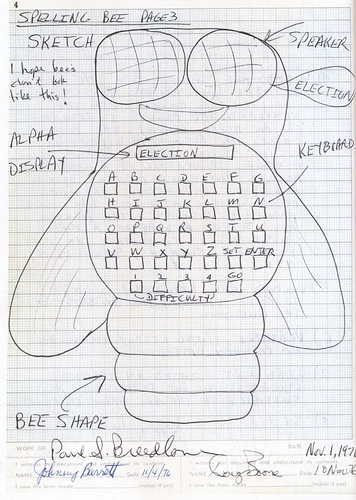IEEE Spectrum post on the TI Speak & Spell. Obviously not a full fledged computer but it was one of the first products to feature a DSP-like chip (for speech synthesis) that would later lead to the whole range of TI DSPs in the market.
Before the Speak & Spell was introduced, hardly anybody other than the four engineers who developed it thought it should be introduced. Texas Instruments management saw little value in the project. When the four described it to one of the nation’s top experts in spelling education, he essentially advised them to kill it. When they test-marketed it, parents were dismissive.
But Paul Breedlove, Gene Frantz, Larry Brantingham, and Richard Wiggins were having fun building it, and didn’t want to stop. They somehow forgot to mention to TI management that they had encountered surprising antipathy to the idea, even where one might have expected warm endorsement. Fortunately for them, though, it just so happened the Speak & Spell was the only consumer-targeted project at TI at that particular moment that was within its budget (two of the others were a CB radio and a home computer).
Well, almost within budget. In an interview, Frantz recalls that it’s just possible the team may have neglected to properly expense a few things to keep the official cost tally low. But these things happen, don’t they?
[…]
The synthesizer was based on a technique for coding speech called linear predictive coding (LPC). LPC let the device generate the speech signal for an entire word from a relatively small amount of data, much smaller than what would have been required to simply store digitized recordings of the words themselves. The idea to use LPC, which was cutting edge at the time, came from Wiggins, whose specialty was voice-processing algorithms, and who held a doctorate in applied math from Harvard and had previously worked at the Mitre Corp. Wiggins was acquainted with some of the pioneers of LPC, which was then starting to find commercial applications after being developed in the 1960s at Bell Labs in New Jersey, and at Nagoya University and NTT in Japan.The synthesizer chip ran digital signal processing logic, although it was not itself a DSP. Wiggins and Brantingham specified and designed the chip entirely by themselves and without any approvals from anyone, according to Frantz. TI management had neglected to fit the project into any particular reporting structure, and that suited the four team members just fine. In Frantz’s estimation, the lack of “help” from management gave Wiggins and Brantingham the freedom they needed to figure out a successful design. “They made the appropriate compromises to get that puppy to work,” Frantz says.
[…]
Texas Instruments wouldn’t produce its first digital signal processor chip for another five years, in 1983. But the implementation of DSP logic in the Speak & Spell was such an important breakthrough that the toy was designated an IEEE Milestone in 2009. It also helped launch TI toward a leadership position in DSP that the company continues to hold more than four decades later.

